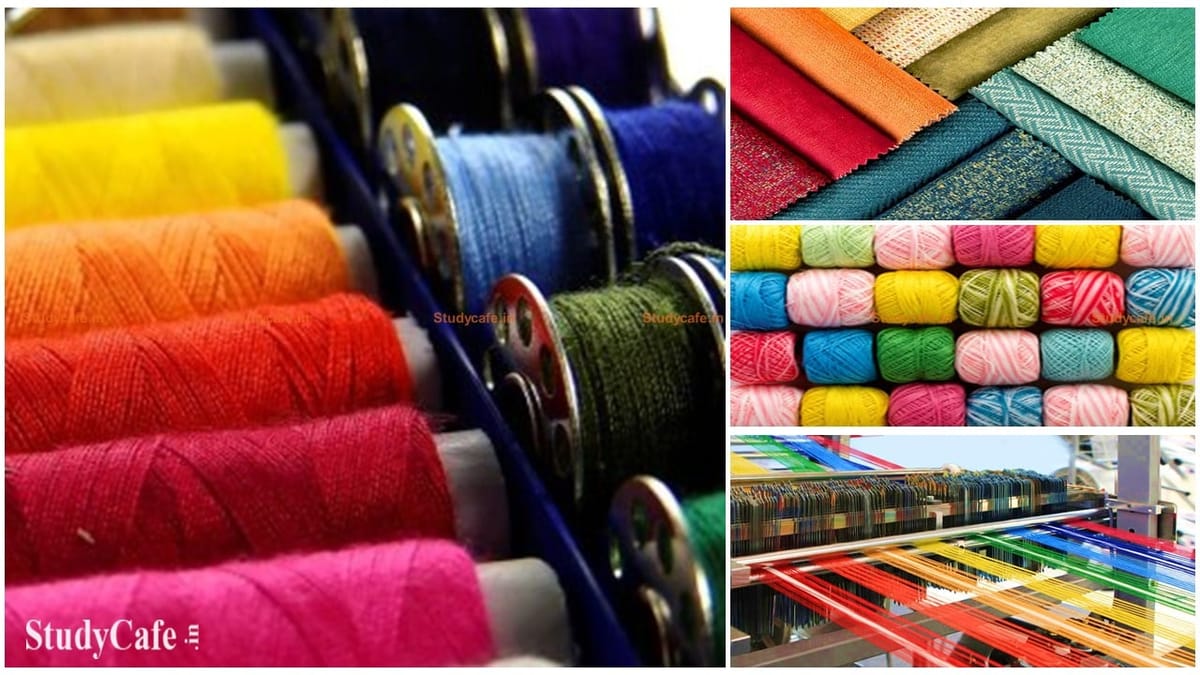Correcting Inverted Duty Structure: GST Council likely to Reconsider Proposal to Increase Rates for Textiles
Reetu | Feb 22, 2022 |

Correcting Inverted Duty Structure: GST Council likely to Reconsider Proposal to Increase Rates for Textiles
Despite the fact that the GST Council had to abandon a plan to raise GST rates for most textile items in the Man-Made Fibre (MMF) value chain from 5% to 12% in late December 2021 due to industry complaints, the government may reconsider it soon. The rate raise was supposed to take effect on January 1, 2022, but it was postponed a day earlier due to industry protests.
Nirmala Sitharaman, Finance Minister, stated on Monday that rectifying the inverted tariff structure in the textiles value chain is critical to attracting investment in the sector. “A correction is required for the sector’s production-linked reward plan.” Or else, investments will not flow into certain areas,” she warned at a post-Budget meeting in Mumbai with industry and trade officials.
The GST Council’s decision to change the rate structure for textile items was intended to address the long-standing issue of inverted duty structure in the synthetic textile market. Manufacturers of man-made fibres have long been subjected to duty differentials with the natural fibre (mostly cotton) segment, and under the GST system, these units were subjected to cumulative input tax credit.
Currently, the tax rates for manmade fibre, yarn, and fabrics are 18%, 12%, and 5%, respectively. To illustrate, the GST rate on the building components mono-ethylene glycol (MEG) and purified terephthalic acid (PTA) is 18%; 12% on polyester partly oriented yarn (POY); and 5% on grey textiles, finished fabrics, and clothing. Cotton, silk, and wool are natural yarns in the 5% range.
When the tax on inputs and intermediates is higher than the tax on final goods, an inverted duty structure results. Sections of the garment industry had welcomed the GST Council’s decision to raise rates, believing that the strong value addition in clothes would offset the rate increase. Several states and the fabrics-to-garments industry, which includes thousands of MSMEs and tiny units, had previously proposed the rate increases with this in mind, but several states and the fabrics-to-garments industry, which includes thousands of MSMEs and tiny units, opposed this move because they saw it as leading to demand compression.
Three-fourths of all textiles produced in the country are sold on the domestic market. “If the GST rate is raised, prices will rise by 6-7 percent, while demand will fall by at least 3 percent.” There will also be inflationary pressures. “(All for) a projected Rs 7,000 crore additional GST revenue, which, in my opinion, is problematic,” former West Bengal finance minister Amit Mitra wrote to Sitharaman ahead of the GST Council meeting on December 31.
A group of ministers (GoM) that is now examining the overall GST rate structure would also look into the textiles value chain and provide a report in February-March.
Due to the inverted tax system, India’s competitiveness in the global textiles industry, where synthetic textile products have a considerably higher share than cotton-based products, is perceived as being dulled.
Source : Financial Express
In case of any Doubt regarding Membership you can mail us at [email protected]
Join Studycafe's WhatsApp Group or Telegram Channel for Latest Updates on Government Job, Sarkari Naukri, Private Jobs, Income Tax, GST, Companies Act, Judgements and CA, CS, ICWA, and MUCH MORE!"